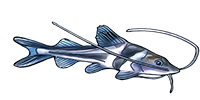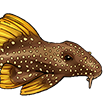C numbers.
- eupterus
- Posts: 176
- Joined: 17 Apr 2005, 23:18
- Location 1: Essex uk
- Interests: Livebearers, corys and L numbers
C numbers.
I maybe missing something but I am confused. Is the C number system, seperate from the original naming system, in addition with numbers for existing described species or a replacement where all original names are redundant. I appologise for my apparent ignorance. Any clarrification would be a step forward
Eupterus.
C. hastatus - habrosus - pygmaeus - aeneus - duplicareus - axelrodi - panda - trilineatus - napoensis - delphax - melini - paleatus - barbatus - concolor - robinae -seussi - reynoldsi - septentrionalis - arcuatus - C57 "nordestini" - guapore - aeneus "black" - C131
C. hastatus - habrosus - pygmaeus - aeneus - duplicareus - axelrodi - panda - trilineatus - napoensis - delphax - melini - paleatus - barbatus - concolor - robinae -seussi - reynoldsi - septentrionalis - arcuatus - C57 "nordestini" - guapore - aeneus "black" - C131
- MatsP
- Posts: 21038
- Joined: 06 Oct 2004, 13:58
- My articles: 4
- My images: 28
- My cats species list: 117 (i:33, k:0)
- My aquaria list: 10 (i:8)
- My BLogs: 4 (i:0, p:164)
- Spotted: 187
- Location 1: North of Cambridge
- Location 2: England.
It's exactly like the L-number system for Loricariidae, just C-numbers are used for Callichtyidae.
It's used to give "names" to fish that hasn't been scientifically described yet. The number should (really) not be used once the species has been scientifically described, but I'm sure it's the same with C-numbers as with L-numbers, it's used as a "common names".
--
Mats
It's used to give "names" to fish that hasn't been scientifically described yet. The number should (really) not be used once the species has been scientifically described, but I'm sure it's the same with C-numbers as with L-numbers, it's used as a "common names".
--
Mats
- eupterus
- Posts: 176
- Joined: 17 Apr 2005, 23:18
- Location 1: Essex uk
- Interests: Livebearers, corys and L numbers
That was my understanding , what confused me was the fact that I can see the C numbers start at 001 and currently go upto around C154ish and these incluse arcuatus as C020 i think but i acnt see species like aneaus, paleatus and the common ones. Is it the case that with the arcuatus they thought they had a new species and found it was the same one but a c number had already been allocated. I cant understand the order. Surely there are more than 154 species of cory?
Eupterus.
C. hastatus - habrosus - pygmaeus - aeneus - duplicareus - axelrodi - panda - trilineatus - napoensis - delphax - melini - paleatus - barbatus - concolor - robinae -seussi - reynoldsi - septentrionalis - arcuatus - C57 "nordestini" - guapore - aeneus "black" - C131
C. hastatus - habrosus - pygmaeus - aeneus - duplicareus - axelrodi - panda - trilineatus - napoensis - delphax - melini - paleatus - barbatus - concolor - robinae -seussi - reynoldsi - septentrionalis - arcuatus - C57 "nordestini" - guapore - aeneus "black" - C131
- eupterus
- Posts: 176
- Joined: 17 Apr 2005, 23:18
- Location 1: Essex uk
- Interests: Livebearers, corys and L numbers
Sorry for wasting webspace I have been looking for links and have found this. It explains things perfectly, mainly beacuase it is by the man who started the C number system
http://www.corydorasworld.com/c_numbers
http://www.corydorasworld.com/c_numbers
Eupterus.
C. hastatus - habrosus - pygmaeus - aeneus - duplicareus - axelrodi - panda - trilineatus - napoensis - delphax - melini - paleatus - barbatus - concolor - robinae -seussi - reynoldsi - septentrionalis - arcuatus - C57 "nordestini" - guapore - aeneus "black" - C131
C. hastatus - habrosus - pygmaeus - aeneus - duplicareus - axelrodi - panda - trilineatus - napoensis - delphax - melini - paleatus - barbatus - concolor - robinae -seussi - reynoldsi - septentrionalis - arcuatus - C57 "nordestini" - guapore - aeneus "black" - C131




